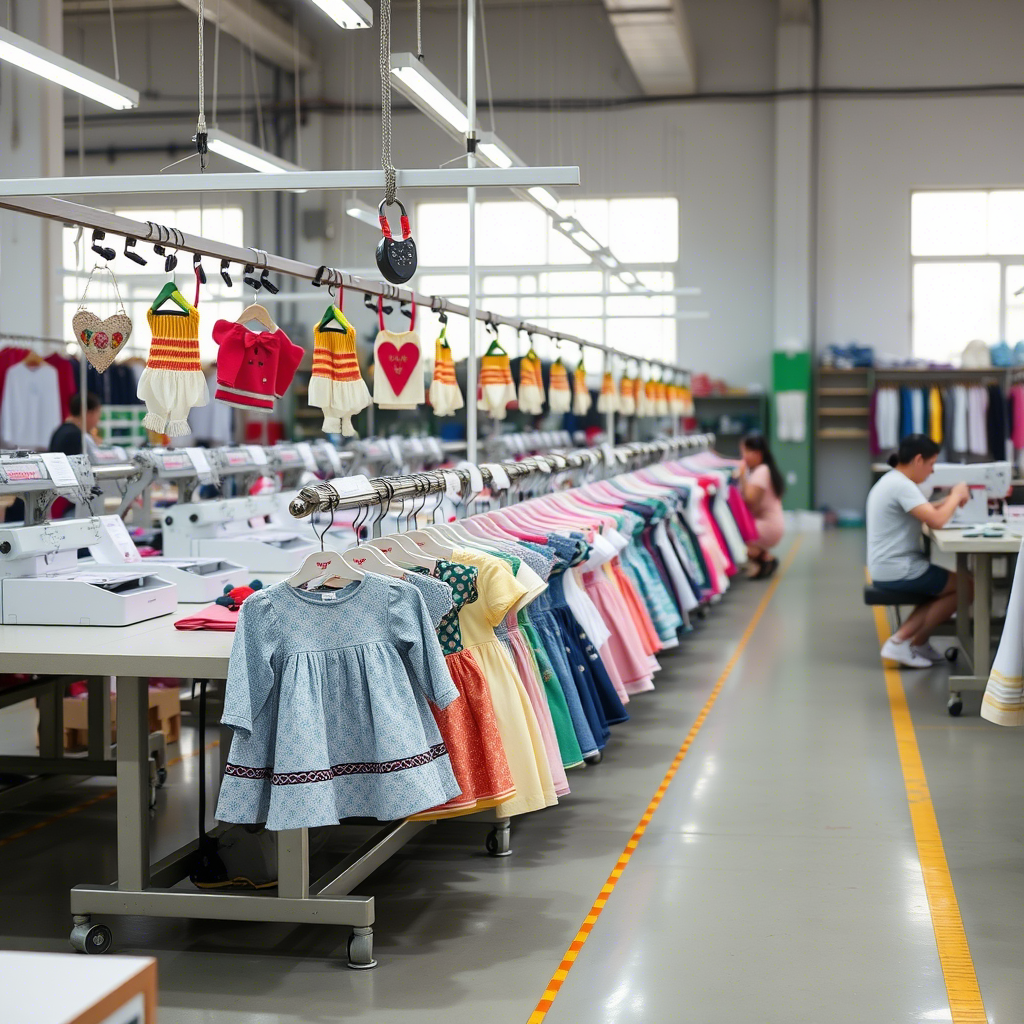Wholesale Kids Apparel Manufacturers in China and USA
Category: garmentsThe Global Kids’ Fashion Industry: Trends, Challenges, and Opportunities
The kids’ fashion industry has experienced significant growth over the years, driven by increasing demand for stylish and comfortable clothing for children. The industry encompasses a wide range of products, from casual wear to formal attire, and is influenced by various factors such as changing consumer preferences, advancements in textile technology, and global economic trends. As the industry continues to evolve, it is essential to understand the key drivers, challenges, and opportunities that shape the market.
Understanding the Kids’ Fashion Market
The kids’ fashion market is a complex and multifaceted industry that caters to diverse needs and preferences.
- The market can be segmented into various categories, including age groups (infants, toddlers, and older children), product types (casual wear, formal wear, and outerwear), and distribution channels (online and offline).
 The image showcases kids wearing vibrant outfits, highlighting the importance of style and comfort in kids’ clothing.
The image showcases kids wearing vibrant outfits, highlighting the importance of style and comfort in kids’ clothing.- According to a report, the global kids’ wear market size was valued at USD 262.8 billion in 2020 and is expected to grow at a compound annual growth rate (CAGR) of 6.3% from 2021 to 2028.
Key Trends Shaping the Industry
Several trends are driving the growth of the kids’ fashion industry, including:
- Sustainability: With increasing awareness about environmental issues, parents are seeking eco-friendly and sustainable clothing options for their children. Many manufacturers are now incorporating sustainable materials and practices into their production processes.
- Personalization: The demand for personalized clothing is on the rise, with parents seeking unique and customized products that reflect their child’s individuality.
 This image illustrates a typical production line in a children’s clothing factory, highlighting the importance of efficient manufacturing processes.
This image illustrates a typical production line in a children’s clothing factory, highlighting the importance of efficient manufacturing processes.
Challenges Facing the Industry
Despite the growth opportunities, the kids’ fashion industry faces several challenges, including:
- Quality Control: Ensuring consistent quality across products is crucial, particularly in a global market where manufacturing is often outsourced to third-party suppliers. Companies like Lezon Kids are addressing this challenge by implementing rigorous quality control measures.
- Compliance with Regulations: Manufacturers must comply with various regulations and standards related to safety, labeling, and environmental sustainability. Staying up-to-date with these regulations is essential to avoid non-compliance and reputational damage.
Opportunities for Growth
The kids’ fashion industry presents numerous opportunities for growth, driven by:
- E-commerce: The rise of e-commerce has transformed the way parents shop for kids’ clothing, with online platforms offering convenience, flexibility, and a wider range of products.
- Innovative Designs: Companies that invest in innovative designs and product development can differentiate themselves in a competitive market. For example, Lezon Kids’ toddler clothing range features stylish and comfortable designs that appeal to parents.
 The image showcases American kids wearing trendy apparel, highlighting the demand for fashionable kids’ clothing.
The image showcases American kids wearing trendy apparel, highlighting the demand for fashionable kids’ clothing.
Future Outlook
The kids’ fashion industry is expected to continue growing, driven by increasing demand for high-quality, sustainable, and stylish clothing. To remain competitive, manufacturers and retailers must stay attuned to changing consumer preferences and trends. By investing in innovative designs, sustainable practices, and efficient manufacturing processes, companies can capitalize on the opportunities presented by this dynamic market.
Conclusion
The kids’ fashion industry is a complex and multifaceted market that offers numerous opportunities for growth and innovation. By understanding the key trends, challenges, and opportunities shaping the industry, manufacturers and retailers can develop effective strategies to meet the evolving needs of consumers. As the industry continues to evolve, it is essential to prioritize sustainability, quality, and innovation to remain competitive in a rapidly changing market.